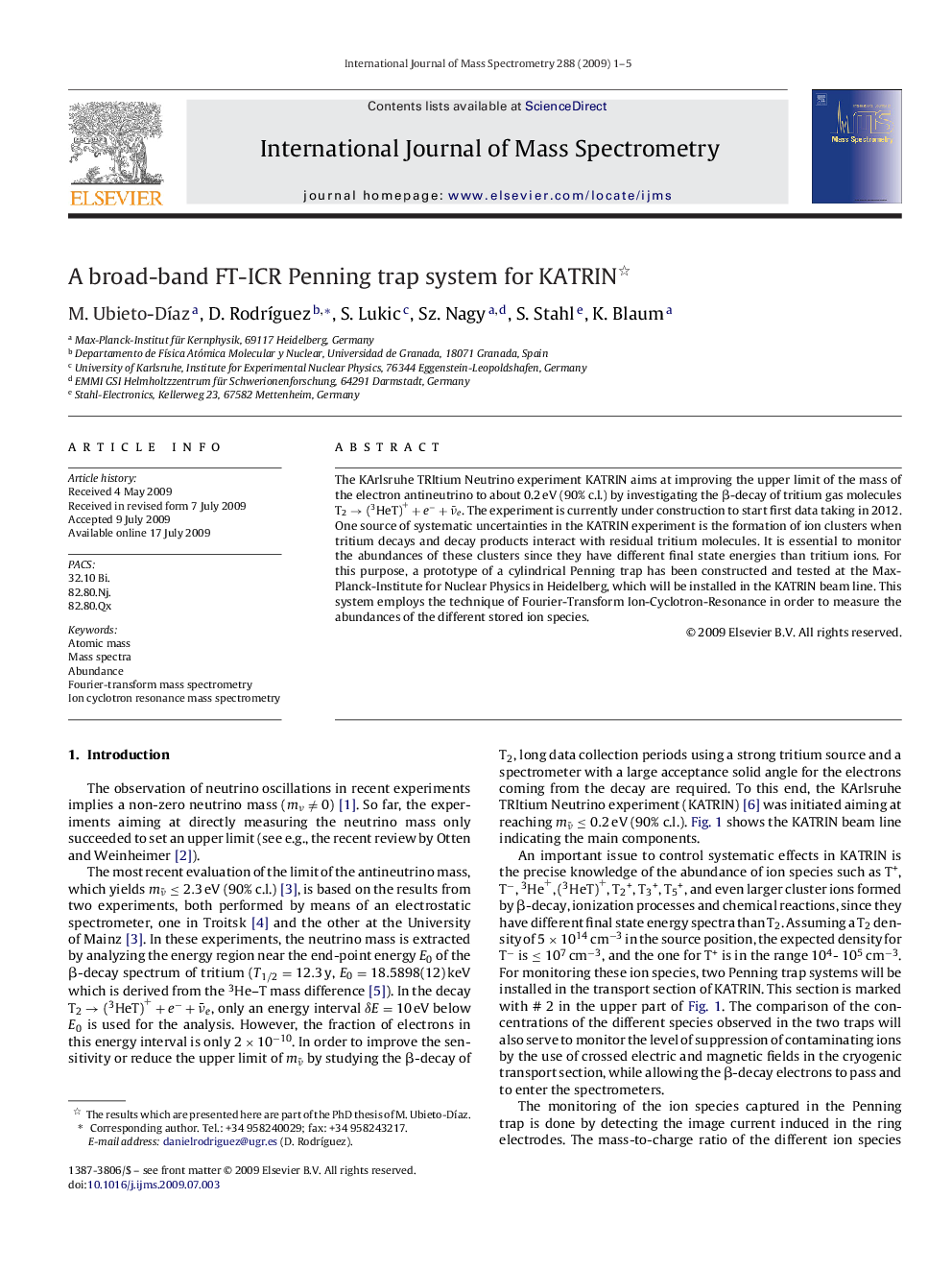| Article ID | Journal | Published Year | Pages | File Type |
|---|---|---|---|---|
| 1193959 | International Journal of Mass Spectrometry | 2009 | 5 Pages |
The KArlsruhe TRItium Neutrino experiment KATRIN aims at improving the upper limit of the mass of the electron antineutrino to about 0.2 eV (90% c.l.) by investigating the β-decay of tritium gas molecules T2→(HeT3)++e−+ν¯e. The experiment is currently under construction to start first data taking in 2012. One source of systematic uncertainties in the KATRIN experiment is the formation of ion clusters when tritium decays and decay products interact with residual tritium molecules. It is essential to monitor the abundances of these clusters since they have different final state energies than tritium ions. For this purpose, a prototype of a cylindrical Penning trap has been constructed and tested at the Max-Planck-Institute for Nuclear Physics in Heidelberg, which will be installed in the KATRIN beam line. This system employs the technique of Fourier-Transform Ion-Cyclotron-Resonance in order to measure the abundances of the different stored ion species.
Graphical abstractTwo three-electrode cylindrical Penning traps using the Fourier-Transform Ion-Cyclotron-Resonance detection technique in order to measure the concentration of unwanted species will be installed in the KATRIN beamline. The system is presently under commissioning at the Max-Planck-Institute for Nuclear Physics in Heidelberg.Figure optionsDownload full-size imageDownload as PowerPoint slide
